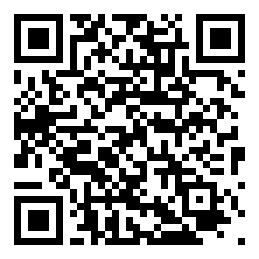The Casting Session
Commercial spot for a brand campaign.

Editor's Selection
- Comments:
- 2
- Votes:
- 0
- ES
The scene, on a set. Intense light directed towards a white background. The rest, in shadows. On the right, a group of young girls, standing, waiting. All very similar. In the foreground, the casting director. Their back is turned and they are in the dark. They make a signal and one of the girls steps into the center of the scene and, looking at the camera, says: “cacharel”. The director watches her carefully for a few seconds and moves on to the next one. And so on, one after another. They are looking for “the Cacharel girl”. Brilliant creative solution of the advertising agency: the brand telling how it builds itself.
The monochrome image forces attention to focus on shapes. Colors would interfere with registering the details of physiognomy and gestures. At one point, the director says to one of the girls: “Please repeat”. The girl smiles and, with the same pout as before, says “cacharel” again. The camera zooms in quickly on her face, the image is fixed, and the Cacharel logo appears below her. The Cacharel girl has been found.
What has happened there? Someone made a pre-selection of girls who “looked the part”, based on a brief that included the Cacharel paradigm. That's why they all looked so much alike: same age, same height, same weight... In other words, “type”. And, moreover, with similar dresses and the same color. With this lineup of potential Cacharel girls, the casting director, with a keen eye, was trying to pinpoint the quintessential Cacharel girl. In the very few seconds they dedicated to each one, their mind, at high speed, decoded the signs they emitted spontaneously: smile, look, pose... Interpretation made from the socially valid codes of naivety, naughtiness, cheekiness, poise, fragility... And, simultaneously, the director compared that reading with the Cacharel brand personality, until they detected a perfect match between their identities. Just in case, they asked her to repeat, to confirm.
Why were they able to do so? Well, “simple as that”. First, because they had a perfect command of those codes, that is, they knew how to make a precise, socially valid, non-personal interpretation of those traits of the girls. And, secondly, because they knew the distinctive features of Cacharel. The photo of the Cacharel girl alone would speak volumes: the brand’s identity, its very essence, captured in a single image. The brand's profile selected its ideal client by showing a mutual identification.
When the casting of a film is right, all the characters are real, not acted: those who play them disappear from sight, they become transparent. When, on the other hand, the casting is wrong, one cannot concentrate on the character because what stands out most is the actor or actress. In our example, the chosen girl was chosen because “Cacharel” came from her soul, that is to say, all she said was “cacharel”.
Exactly the same happens in the relationship between the logo and the brand. The writing of the name must seem to come from the soul of the company. It must not be seen: it must evoke the company. It must become transparent as soon as it becomes known, that is to say, it must appear as the only possible way, the most natural way, to say its name. If instead of referring to its owner, the logo refers to itself, it has failed in its mission.
When a graphic designer chooses a typeface to build their client’s logo, exactly the same process takes place in their mind. They decode, in the pre-selected fonts, their connotations of nuance: tradition, coldness, elegance, colloquiality, amenity, severity... and contrast this reading with the strategic profile of their client, their self-expressive mood.
What do they need to know to avoid picking the wrong typeface? “Simple as that”: they must perfectly master the cultural codes related to letters (never their personal predilections) and know the brand personality of their client perfectly; and so they find that perfect match. Their brain must store countless paradigms—socially relevant associations—to capture nuances in every graphic detail and avoid choosing “broadly.” And their sensitivity will bring them to life in the precise order and combination. They become a “casting director for typefaces.” Without this interpretative capacity, design is a mere practice of drifting formal invention.
To design at a high professional level, one must become a culturally representative interpreter of the society for which one works and be an acute interpreter of the client's profile. A good graphic designer is basically a good designer because they have a very high command of connotation and know how to generate messages that connote what they should connote. And this is so regardless of whether the designer knows it or ignores it.
This article was originally written in Spanish and adapted for English using AI to facilitate global dissemination.
Professional Excellence
If you are looking for content with this level of rigor, you will be interested in our academic offer. Courses designed to meet the real demands of the profession.
View Academic OfferShare
Please value the editorial work by using these links instead of reproducing this content on another site.

Topics covered in this article
What do you think?
Your perspective is valuable. Share your opinion with the community in the discussion.
Comment now!


